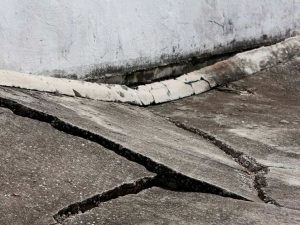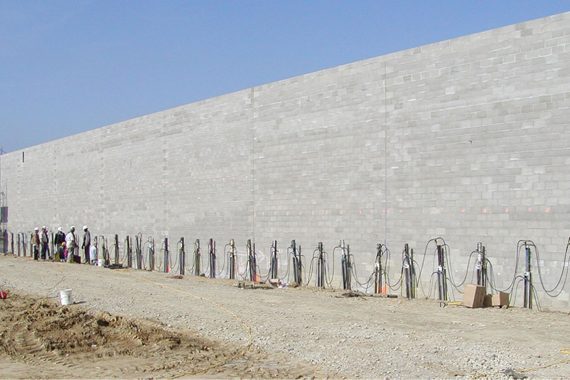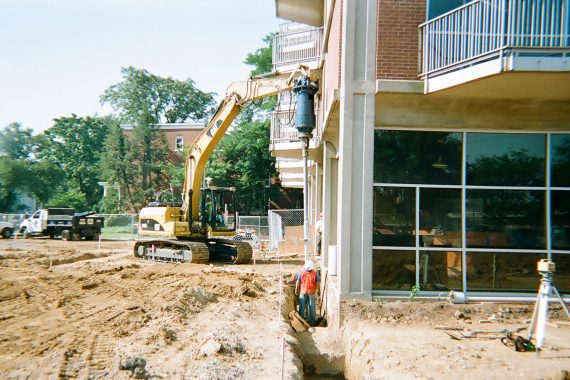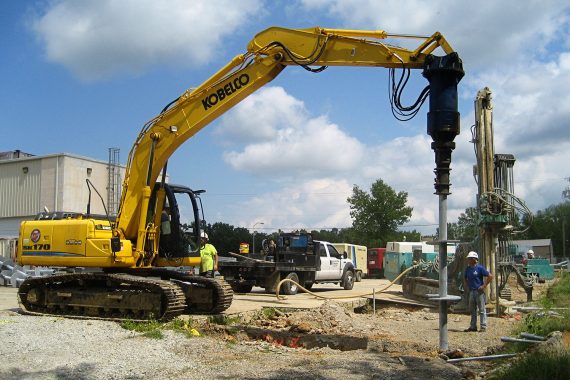Sinking concrete is a fairly common problem encountered by homeowners and businesses alike, where varying climatic conditions and diverse soil types pose unique challenges to maintaining solid, level concrete surfaces. Understanding the main causes of sinking concrete not only can help in addressing current issues but also prevent future occurrences. Local foundation repair contractor The Dwyer Company takes a look at the causes behind this issue and their solutions.

-
Soil Erosion. One of the chief culprits behind sinking concrete is soil erosion. Heavy rainfall and runoff can wash away the soil beneath concrete structures like driveways, sidewalks, and patios, compromising their foundation. Preventing soil erosion through effective drainage can safeguard the structural integrity of concrete surfaces.
-
Poorly Compacted Fill Soil. During the construction phase, the compaction of fill soil is crucial for establishing a stable base for concrete slabs. If the soil beneath a slab isn’t adequately compacted, it creates a weak base that can lead to sinking over time. Ensuring proper compaction techniques before laying concrete slabs is essential for long-term stability, particularly in both residential and commercial foundations.
-
Changes in Soil Moisture Content. The soil’s moisture content plays a significant role in the stability of concrete. Soils with high clay content, common in parts of Ohio, expand when wet and shrink upon drying, creating voids beneath concrete slabs that can lead to sinking. Regular monitoring of drainage and proactive landscaping can mitigate these effects by maintaining consistent soil moisture levels around concrete structures.
-
Fluctuating Moisture Content. The unique challenge of fluctuating moisture content stems from clay-rich soils. These soils amplify the problem, with wet seasons causing swelling and dry spells leading to shrinkage. Solutions include improving soil drainage around concrete areas and using materials like polyurethane foam injections to stabilize existing concrete.
-
Poor Initial Construction. Subpar construction practices, such as inadequate site preparation and poor material quality, contribute significantly to sinking concrete. This factor is under human control and can be remedied by employing experienced professionals who adhere to best practices and building codes, ensuring that the groundwork is properly prepared and the right concrete mix is used.
-
Impact of Tree Roots and Vegetation. The growth of tree roots and vegetation near concrete areas is a natural cause of sinking concrete. Large trees close to driveways or sidewalks can lead to uneven surfaces as roots push against concrete. Implementing root barriers and strategic landscaping can prevent damage without necessitating tree removal, supporting the overall integrity of the home foundation repair efforts.
Addressing sinking concrete requires a comprehensive approach that considers the unique soil properties, weather patterns, and construction practices of the region. Regular maintenance, early detection of potential problems through routine inspections, and professional repairs can extend the lifespan of concrete structures, maintaining their appearance and functionality. Solutions such as polyurethane foam injection offer effective fixes for existing issues, while proper construction and landscaping practices can prevent future sinking.
Remember, the key to combating sinking concrete lies in understanding its causes and taking proactive measures to counteract them. For top-notch concrete and foundation repair services, turn to The Dwyer Company. Call us at (877) 399-3726, or fill out our contact form for an appointment.




